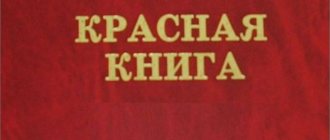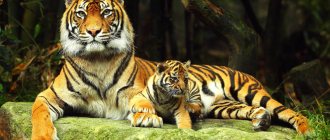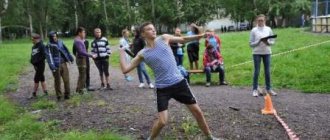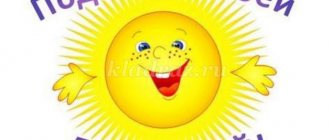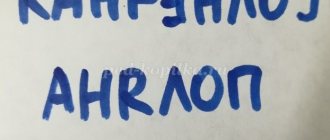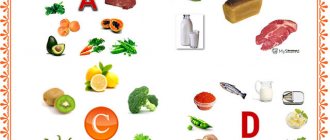Ecological game-seminar Eco-quiz “Red Book” of the Chelyabinsk region. - presentation
Ecological game-seminar Eco-quiz “Red Book” of the Chelyabinsk region
Goal: 1. To foster an ecological culture and rational use of nature’s gifts 2. To test the teaching staff’s knowledge of the flora and fauna of the planet 3. Based on environmental knowledge and experience, to solve problematic situations in communication with nature
WHAT IS NATURE? Nature is rivers, seas, lakes, forests and fields, sun and sky, soil and air, all living things. And man is also a part of nature, and the smallest insect is also a part of nature. Today we will talk mainly about the FOREST. THE FOREST is beauty, where slender birches, evergreen pines and spruces grow, we also have fir, cedar, oak, etc. How nice it is to visit the forest in the summer - breathe fresh air, listen to birdsong, pick berries and mushrooms. THE FOREST is beauty, where slender birches, evergreen pines and spruces grow, we also have fir, cedar, oak, etc. How nice it is to visit the forest in the summer - breathe fresh air, listen to birdsong, pick berries and mushrooms.
The FOREST must be treated with care and respect. He can clothe, feed, and shelter, but you must first remember these rules: THE FOREST must be treated with caution and respect. He can clothe, feed, and shelter, but you must first remember these rules: If you go into the FOREST, even for an hour, take matches, a knife, water, salt; If you go to the FOREST, even for an hour, take matches, a knife, water, salt; Don't walk through the forest alone; Don't walk through the forest alone; Don't go too far from the path; Don't go too far from the path; Take note of landmarks - they will help you find your way home; Take note of landmarks - they will help you find your way home;
If you get lost and find an unfamiliar road, do not leave it, and if you go to the river, follow the bank; If you get lost and find an unfamiliar road, do not leave it, and if you go to the river, follow the bank; If you get lost, don't despair! In the forest they die not from hunger and thirst, but from panic and fear. The main thing is patience and hope; If you get lost, don't despair! In the forest they die not from hunger and thirst, but from panic and fear. The main thing is patience and hope; The forest, no matter how dense it is, conceals traces of the presence of man and beast - learn to notice them. The forest, no matter how dense it is, conceals traces of the presence of man and beast - learn to notice them.
Let's imagine this situation: you went to the forest to pick mushrooms, took with you a basket, a knife, matches, a plastic bag, a sandwich. Unbeknownst to ourselves, we got lost and, in search of a way back, we went deeper and deeper into the forest. Fear and despair had already settled in your soul, but you, having gathered all your courage, pulled yourself together. Night is approaching, you need to prepare shelter for yourself, eat and wait for the morning... And in the morning you set off again in search of the way home. Let's imagine this situation: you went to the forest to pick mushrooms, took with you a basket, a knife, matches, a plastic bag, a sandwich. Unbeknownst to ourselves, we got lost and, in search of a way back, we went deeper and deeper into the forest. Fear and despair had already settled in your soul, but you, having gathered all your courage, pulled yourself together. Night is approaching, you need to prepare shelter for yourself, eat and wait for the morning... And in the morning you set off again in search of the way home.
The task for both teams is “How to spend the night in the forest” 1k. What can become shelter? (Hut. Large spruce branches are placed in a cone, small ones - along the perimeter between them.) 2k. What to sleep on? (On the mattress. Sedge, spruce branches, laid (On the mattress. Sedge, spruce branches, laid in several layers.)
First task for Team 1: Team 1: “What will we eat from?” (Coat a mushroom basket with clay, earth, burn it on a fire, you can boil water) Team 2: “What are we going to drink from?” (We use a piece of birch bark folded into a cone as a mug)
Task two for Team 1: “What can be used as soap?” (The role of “soap” is played by plants such as soapwort or saponaria, elderberries, as well as the inside of tinder fungi, such as chaga.) Team 2: “What can you use to clean your teeth?” (Charcoal with crushed and mint leaves)
The task for both teams is 1k. “We treat wounds and patch up holes” Name forest medicines (“We bandage” with plantain leaves, instead of cotton wool - sphagnum or cuckoo flax) 2k. “Forest Compass” How can you navigate in nature without a compass? (Mosses and lichens grow on trees on the north side. Resin appears on pines and spruce trees on the south side. Butterflies are also a compass: their wings “look” east in the morning, south at noon, and west in the evening.)
“ALMOST ALL ABOUT THE ANIMAL WORLD” “ALMOST ALL ABOUT THE ANIMAL WORLD” Task one Task one Team 1: Team 1: Name the animals that are in one way or another connected with the production of medicines. (Deer - antlers; badger - fat; bear - bile; bees - honey, propolis; snake - poison; goat - milk; ants - alcohol, etc.) Team 2: Team 2: Name all the domestic animals and explain why they were domesticated. (Cat, dog, cow, pig, horse, rabbit, buffalo, yak, bull, sheep, camel, deer, donkey, etc. Give wool, milk; used for protection; as a vehicle)
Task two Team 1: Team 1: Try to explain the names of famous animals, birds, insects. (Gudgeon - lives in the sand; tench - “molts”, that is, changes color from yellow to pink; tit - sings “zin-zin”; sandpiper - shouts “quick”; dragonfly - chirps; goldfinch - dandy, dandy; nightjar - and hovering around the grazing herds; the horsefly bites so hard that it hurts that your eyes are dark, you go blind; the wolf - drags its prey; the insect - notches on the body.) Team 2: Team 2: Explain the name of famous plants, mushrooms. (Boletus, boletus, etc.) Milk mushroom -?
The task for both teams is 1k. “Identify the bird” 1k. “Identify the bird” Among the proposed birds, find a jay. Among the proposed birds, find a jay. 2k. “Identify the insect” 2k. “Identify the insect.” Among the proposed insects, find a firefly among the proposed insects. find a firefly.
1 to. Continue the phrase... - The longest tongue is... - The longest tongue is... (chameleon) (chameleon) - The strongest sense of smell is... - The strongest sense of smell is... (butterflies) (butterflies) - Hears best of all... - Hears best of all... ( owl) (owl) - The fastest flies... - The fastest flies... (swift) (swift) - The most vigilant... - The most vigilant... (golden eagle) (golden eagle) - The most powerful poison of... - The most powerful poison of... (tiger snake ) - The most trusting bird... - The most trusting bird... (grouse). (grouse). 2k. Continue the phrase... - The smartest animals... - The smartest animals... (dolphins) (dolphins) - More eyes... - More eyes... (dragonflies and flies) - A powerful natural power plant... - A powerful natural powerhouse... (scat) (scat) - The largest frog... - The largest frog... (goliath) (goliath) - Champions in spawning... - Champions in spawning... (sunfish) (sunfish) - Champions in longevity... - Champions in longevity... (turtles) ( turtles) - Champions in diving... - Champions in diving... (whale, turtle) - The longest flights are made by... - The longest flights are made by... (terns) The task for both teams is “Book of Nature Records”
Assignment to both teams “Musical break” Team 1: Perform songs Perform songs about flowers...
Team 2: Team 2: Sing songs about trees... Sing songs about trees...
BLITZ TOURNAMENT 1. In what year was the “Red Book of Russia” published (2001) 2. In what year was the “Red Book of the Chelyabinsk Region” published (2005) 3. What birds are listed in the “Red Book of the Chelyabinsk Region”. (golden eagle, gyrfalcon, bustard, osprey, black stork, steppe eagle, red-breasted goose, peregrine falcon, eagle owl, imperial eagle, shelduck, belladonna, sand lance) 4. What animals are listed in the “Red Book of the Chelyabinsk Region. (Russian muskrat, grass snake, mustachioed bat, brown long-eared bat, steppe pisser, deer, flying squirrel, garden dormouse) 5. Which fish are included in the “Red Book of the Chelyabinsk Region” (sterlet, common European taimen, brown trout, grayling, common sculpin) 6. Which butterflies are listed in the “Red Book of the Chelyabinsk Region” (peacock eye, small night spur, cutworm, mother of pearl, common appalon, marigold, sennitsa, amaryllis) 7. Which natural monuments are located in our area 1 Zoological artificially created man-made forest on Mount Izvoz (Verkhneuralsk) 2.. Mount Baksanka (to the left of the village of Lozhkino)
3. Geological monument “Leafy Hill” (on the Kurosan river) 4. Nature reserve “Karagaisky” 5. Landscape natural monument a) Lake Chebachye 1 (Urlyady village) b) lake. Chebachye 2 (Podolskoe village) 8. What nature reserves are there in the Chelyabinsk region: 1. Ilmen State Reserve (Miass). 2. Taganay National Park (Zlatoust) 3. East Ural Nature Reserve (Kunashaksky and Kasli districts) 4. Natural landscape historical and archaeological (Bredensky and Kizilsky districts) 5. Zyuratkul National Park ( Satka) 9. Can a penguin be called a bird, and a dolphin a fish? (A penguin is a bird, but a dolphin is a mammal) 10. What kind of fish builds a nest? (Smelt) 11. Does a mosquito have teeth? (And a lot: 22 teeth) 12. Who has ears on their feet? (At the grasshopper) 13. Who drinks with their feet? (Frog) 14. Who wears a plow on his head? (Moose) 15. What animal doesn’t part with its toy? (Rattlesnake)
16. Swan living on the lakes of the Urals? (Shipun) 17. What is the largest river in our area? (Ural) 18. The highest mountain in the Urals? (Iremel) 19. Lake, natural monument, Southern Urals? (Vorozheich) 20. Why is the Red Book called Red, and not Green? (Red color is a danger signal)
Remember the five laws of nature conservation: nature conservation: 1. You cannot live on Earth and not take it, but you must take it rationally. 2. Everything that is on Earth is necessary for its human development. 3. Man is not the master of nature: by destroying it, he destroys himself. 4. By protecting nature, we protect the world's population. 5. Nature conservation is part of the struggle for peace. Nature and war are incompatible. Nature must be loved and protected. Admiring the beauty of nature, a person becomes better and kinder. Nature teaches man wisdom.
Wise NATURE teaches us at any time of the year! Birds teach singing, Spiders teach patience, Bees in the field and garden learn to work; And besides, in their work Everything is fair. Reflection in water - Teaches us truthfulness. Snow teaches us purity, Teaches the sun kindness. And despite all the enormity, Teaches modesty. We need to learn from NATURE all year round, trees of all species, all the great forest people, teach us strong friendship! V. Orlov
Event “Gallery of the Red Book”
Children's answers
: …
Presenter's answer
: Right. (slide) The Red Book is the main document that summarizes materials on the current state of rare and endangered species of plants and animals, on the basis of which scientific and practical measures are developed aimed at their protection, reproduction and rational use.
The Red Book includes species of plants and animals that constantly or temporarily grow, or live in natural conditions in a certain territory (mainly the territory of a single country), and are in danger of extinction. Species of animals and plants listed in the Red Book are subject to special protection throughout the entire individual territory covered by a specific edition of the Red Book.
In 1978, the first volume of the Red Book appeared. The second edition was published in 1984 (slide).
Red books come at different levels - international, national and regional.
But these books were not enough, and then regional and republican Red Books began to be published. In 2004, the Red Book of St. Petersburg was published ( Slide 35)
, which published lists of 164 species of animals (
Slide 36)
, 79 species of plants (
Slide)
, 16 species of lichens, 29 species of fungi.
( Slide)
Teacher:
And a 9th grade student will tell a good poem by a poet about the Red Book.
So many rare animals and birds are protected by the Red Book, So that the multifaceted expanse can survive For the sake of the light of the coming lightning. So that the deserts do not dare to come, So that souls do not become empty, Animals are protected, Snakes are protected, Even flowers are protected. Like this. It's sad, of course.
Teacher:
What plants and animals living in our city have already been included in the Red Book of the Volgograd Region?
Slide show and story on the Red Book of the Volgograd region
Teacher: We will continue our journey ………..(children read a poem)
They shoot at a bird, they shoot at an animal, And with each shot there are fewer and fewer animals: Nature brings us with childlike trust Not only prey - it brings itself.
The miner shoots and does not know how to stop. Here again the hand reaches for the gun. You can’t hear the fox crying for the fox, the hare will no longer see her son.
How the elk trumpeted a farewell song to us, And how the forest groaned with every branch. A piece of nature will no longer be resurrected, A cut on the heart will be baked in the blood.
The gambling alien does not feel pain, No matter who he meets, he will not give mercy, Forest wealth is a trump card, He will sell his soul for profit.
Nature cannot repel the grabbers, And she has neither castles nor fences: - Who will stop them? Will it help nature? - Trees and birds scream in alarm. (T. Melchenko, “Hunting”)
Ecological game for 2-3 grades. Abstract
Summary of the game “They need protection”
Intellectual ecological game according to the Red Book of the Nenets Autonomous Okrug
Author: Tatyana Aleksandrovna Tolstikova, teacher of the State Budgetary Educational Institution of the Nenets Autonomous Okrug, Naryan-Mar Goal: acquaintance with certain species of flora and fauna included in the Red Book of the Nenets Autonomous Okrug Objectives: to cultivate a caring attitude towards the nature of the native land , develop intellectual abilities, broaden children’s horizons, develop reading interest, and contribute to the unity of the children’s team. Description: the game is intended for students in grades 2-3 and may be of interest to elementary school teachers for an in-depth acquaintance with the Red Book.
The game is played on the principle of the game “Sea Battle”. A group of children are divided into 2 teams. A 7*7 field is posted on the board, marked with numbers and letters, as in the game “sea battle”. This is a "protected area". On it are: an animal, a fish, an insect, a mushroom, 2 flowers, 4 poachers. Each team takes turns making a move, but when they hit a piece, the team continues to play until they guess the whole piece or make a mistake. If they land on squares with figures, it means they managed to protect this type of flora and fauna, and they earn 5 points regardless of the size of the figure. If they are caught by a poacher, they pose a danger to the environment and lose 5 points. The remaining fields contain the names of an animal or plant listed in the Red Book of the Nenets Autonomous Okrug, which must be guessed, for which the team receives 3 points. If a team fails to complete a task, the opposing team can complete it, for which they receive an additional point. If the teams fail, the teacher voices the answer. The game continues until the entire field is open.
Design: heading “They need protection”, Red Book of the Nenets Autonomous Okrug, playing field, illustrations depicting the nature of the Nenets Autonomous Okrug, map of the district, sample figures.
Progress of the game.
Teacher : Hello, guys! During the lessons you became acquainted with the Red Book. What is this book? Children: The Red Book is a list of rare and endangered animals and plants. Teacher: For what purpose was this book published? What does she teach us? Children: The Red Book is for the purpose of preserving wildlife and teaches how to protect and preserve nature! Teacher: Guys, such a book was also published in our district in 2006. It will be republished every 10 years. Currently, the Red Book of the Nenets Autonomous Okrug includes 225 names of animals and plants. In the book, a detailed description is made about each of its representatives, it is indicated why it is included in the Red Book, and the map shows its habitat (I show the example of one representative). Today you will be participating in a game dedicated to the Red Book of our district, called “They need protection.” It will be played on the principle of a “sea battle” game. Our field depicts a “reserve zone”, which contains some representatives of the animal and plant world of the Nenets Okrug that need our protection. Their diagrams are in front of you. But poachers also made their way into this area. Who are called poachers? Children: People who hunt and fish illegally. Teacher: During the game, each team will take turns making a move. If you land on a piece and open it completely, you have protected that species of flora and fauna and earned 5 points. If you hit a poacher, you are in danger and you lose 5 points. All other fields contain animals and plants that need to be guessed using some kind of puzzle or description. And so, let's begin our game. The team that scores the most points is the winner of our game. In parentheses, after the name of each representative of the Red Book, a page with information about it is indicated. After children guess an animal or plant, its image and the corresponding book page are shown.
Field values:
A-1 Wild reindeer (p. 364) Identify the animal by description: Medium-sized ungulate, relatively short-legged, with an elongated body. Body length – 1.5-2.2 meters, weight – 100-220 kg. Long hair on the neck forms a mane. Both females and males have horns. A -2 Flower A-3 Common morel (57) Rebus - guess the name of the mushroom.
A-4 White gull (340) Guess the riddle: A white-winged bird flies over the sea, When it sees a fish, it grabs it with its beak. A-5 Siberian sturgeon (280) Rebus - guess the name of the fish.
A-6 Mushroom A-7 Mushroom B-1 Gray-yellow buttercup (169) Anagram - guess the name of the flower TYUKIL B-2 Poacher B-3 Swallowtail (263) Rebus - guess the name of the butterfly.
B-4 Insect B-5 Poacher B-6 Lesser Lesser Lesser White-fronted Lesser (302) Rebus - guess the name of the bird.
B-7 Open bathing suit (170) Guess the riddle Yellow bathing suits are looking out of the groove, A piece of the sun is burning at their very bottom. B-1 Animal B-2 Polar bear (345) Find out the animal by description: The largest predator in the animal world. Body length 1.6-3.3 meters, weight 380-500 kg. The head is small, the neck is long and mobile. The back of the body is more massive than the front, the limbs are long, the feet are very wide. The fur is thick, white in color. В-3 Insect В-4 Insect В-5 White aspen (59) Guess the riddle: I was born on a rainy day under a young aspen, Round, smooth, beautiful, with a thick and straight leg. B-6 Small (tundra) swan Riddle: That long-necked bird is graceful, like a queen, Swims across the surface of the water, wriggling its neck wonderfully. B-7 Fish G-1 Animal G-2 Ground beetle (276-278) Rebus - guess the name of the insect
G-3 Rhodiola rosea (golden root) (191) Rebus - guess the name of the flower
G-5 Atlantic white-sided dolphin, white-faced dolphin (353) Anagram - guess the name of the animal FLIDE G-6 Fish G-7 Fish D-1 Animal D-2 Animal D-3 Poacher D-4 White-tailed eagle (315) Anagram - guess name of the bird LORAN D-5 Nelma (281) Puzzle - cross out the repeating letters and read the name of the fish BNUZEBZLTSHTIMUSHAI D-6 Rock violet (202) Anagram - guess the name of the flower KALIFA D-7 Fish E-1 Animal E-2 Bowhead whale, humpback, northern blue (358-360) Find out the animal by description. Marine mammal, body length depending on the species from 16 to 33 m, body weight up to 100 tons. A very large head with a huge oral cavity. The lower jaw is usually wider than the upper jaw. The color is often black or dark blue. E-3 Common and long-faced seal (350, 351) Guess the riddle: I have little wool, but among the polar ice Fat, like a blanket, protects me from the cold. E-4 Bluebell one-flowered (222) Guess the riddle: It doesn’t call for recess and back to class, Because it’s just a blue forest flower. E-5 Flower E-6 Mother of pearl (272) Rebus - guess the name of the butterfly.
E-7 Fish F-1 Animal F-2 Animal F-3 Dandelion naked, snowy, arctic (230-232) Guess the riddle: I show off with a white fluffy ball in a clean field. A light breeze blew and a stem remained. F-4 Smallmouth smelt (287) Rebus - guess the name of the fish.
F-5 Gray crane (324) Guess the riddle: The brothers stood on stilts, looking for food along the way. Whether running or walking, they can’t get off their stilts. Zh-6 Poacher Zh-7 Walrus (348) Guess the riddle: Fang-fanged, with flippers instead of legs. The tail drags on the ice, the animal is not afraid of frost. Teacher: Our journey through the protected area has come to an end. Guys, have you met any familiar representatives of the animal and plant world? Which? (children's answers) Can you and I help preserve them? How? Children: Do not pick flowers, do not destroy nests, tell adults that they should not engage in poaching, etc. Teacher: I am sure that not only in our game you protected plants and animals that are in danger, but in real life you will be their reliable defenders. And to learn more about the protected animals and plants of our district, check the Red Book of the Nenets Autonomous Okrug more often. Summing up, awarding the winners. The game uses riddles from Uzorova and Nefedova from the “Big Book of Riddles” and author’s puzzles.
We recommend watching:
Ecological game for 4th grade Ecological fairy tale, 2nd grade. Scenario A story about a birch tree for children 6 - 8 years old An extracurricular activity on ecology for grades 2-5. Ecological excursion
Similar articles:
Class hour, 2nd grade. Environmental education
Ecology quiz with answers for elementary school
Educational conversation in elementary school. Water and its properties
Game "Field of Miracles" for elementary school, grades 3-4. Undersea world
Ecological game “Field of Miracles” for elementary school
GAME “FIELD OF WONDERS” for younger schoolchildren ON THE TOPIC “RED BOOK PLANTS”
Description. The game was played while covering the topic “Flora and its protection in the Republic of Belarus” during a lesson at the “Entertaining Biology” interest group. The publication is of interest to teachers of additional education in environmental and biological fields, primary school teachers and preschool teachers. Author: Oksana Anatolyevna Danilchenko, additional education teacher, Slutsk Ecological and Biological Center for Students, Slutsk, Minsk region, Republic of Belarus. Goal: to consolidate knowledge about plants from the Red Book of the Republic of Belarus. Objectives: to promote the study of individual plant representatives from the Red Book; promote the development of curiosity; promote a caring attitude towards our native nature. Equipment: game reel with multi-colored sectors; cards with letters; a disc with a melody from the television game “Field of Miracles”, prizes, paper, pens. Participants: students aged 7-10 years. Methodical instructions: the game takes place in three rounds, finals and super games. Three people participate in each round. The winner of each round advances to the final. Three players compete in the final. The winner of the game can refuse the super game. Before each round, participants are selected from among students who have not played before. Players, strictly one after another, spin the drum and name the letters, thus achieving concentration of attention of all participants and equalizing the chances of winning, which is very important for elementary school children. Rules of the game: The player spins the reel only once.
If the arrow points to the sector with the letter “P” (prize), the player must choose: prize or game. The turn passes to the other player if the arrow stops at the number “0”. If the arrow points to the “+” sector, then the player can open any letter. QUESTIONS
Question to the first three players: 1. This plant is one of our most beautiful orchids. People call it “slipper”, “Adam’s head”, “young lady in a hat”. Flowers with their complex structure are a typical example of “trap flowers”. What kind of plant is this? Guess: Lady's slipper
Teacher's addition. Lady's slipper is a plant with a rhizome, glandular pubescent stem and large leaves. The stem is either very short, and then with a single pair of leaves, seemingly mundane, and a single-flowered peduncle, or quite tall, with large alternate leaves and usually with several, usually 1-3, less often with 6-12 flowers. Question for the second three players: 2. This plant is called differently: evasive peony, peonia, pigweed root, zhgun-root, heart berries. What other name does this plant have? Guess: MARYIN ROOT
Teacher's addition . Maryin root is a perennial herbaceous plant up to 1 meter in height. Its rhizome has fleshy spindle-shaped roots and is multi-headed. The stems are leafy in the upper part, ribbed, erect. The flowers are bright red and large. They bloom in May–June. Question for the third three players: 3. Once upon a time there was a legend that these flowers fall into the water at night and turn into beautiful mermaids, and with the appearance of the sun they turn into flowers again. Guess: WATER LILY
Teacher's addition . Dark green leaves float on the surface of the water, in the shape of a large heart, decorated with a snow-white, mesmerizing flower, which exudes a clearly perceptible, delicate aroma. Underwater leaves, very different from above-water ones in their structure and shape, are rolled up in the form of a tube. All leaves and flowers are attached to an elastic stem that stretches from the underwater root to the surface of the water. This stem is so strong that it does not allow even a strong wind to tear the water lily from its place. The water lily reproduces by seeds that ripen under water and by root branching. The white water lily does not like fast currents and grows only in “quiet” water. Question for the final game: 4. According to one version, the plant received this name because its flowers are lowered down, as if the plant itself is sleeping, and evil people, looking at it, for some reason, also fall asleep. From folk tales we know that the flower more than once put to sleep the enemies of Ivan - the prince and Vasilisa the Wise... Science has established that the plant, although somewhat poisonous, is not so poisonous as to put people to sleep with its breath. Guess: DREAM-GRASS
Teacher's addition. Dream grass, or scientifically called lumbago, has lilac flowers and grows in places where a large amount of sun penetrates: on the edges of pine forests, on hills, etc. Flowering time ranges from two to four weeks, from mid-April to May. The leaves of the plant remain until late autumn. The plant is in the Red Book, and picking it is prohibited. Question for a super game: 5. A large evergreen tree up to 33 m high and a trunk diameter up to 80 cm. The needles of white fir are soft, non-thorny, and fragrant. Each needle lives on a tree for 7-10 years. The crown is almost cylindrical. The bark is whitish-gray, smooth. The tree seems fluffier than a Christmas tree. In Belarus, the only isolated location is located in Belovezhskaya Pushcha. Guess: WHITE FIR
Teacher's addition. The cones are light brown, directed upward, oval, their length is 5-7 cm, and crack when ripe.
When ripe, the seeds and scales fall off, so that only the protruding rods of the cones remain on the branches. This feature distinguishes fir from other conifers. Fir lives up to 200 years. The native home of fir is the Siberian taiga. There, fir forests stretch for hundreds of kilometers. It is very dark in the fir forest. The plant is shade-tolerant, tolerates severe frosts, but does not tolerate smoke and air pollution. Presentation of prizes and summing up the results of the game
Note:
if time allows at the end of the game, you can invite everyone to draw plants from the Red Book.
We recommend watching:
Ecological quiz with answers for schoolchildren in grades 4-7 Zoological game quiz with answers for schoolchildren in grades 4-7 “Giant mammals” Ecological quiz for younger schoolchildren with answers “The Mysterious World of the Wolf” Ecological program for children 5-9 years old. Theme: Squirrel
Similar articles:
Role-playing environmental game for schoolchildren, grades 9 - 11
Game environmental program for elementary school, grades 2-4
